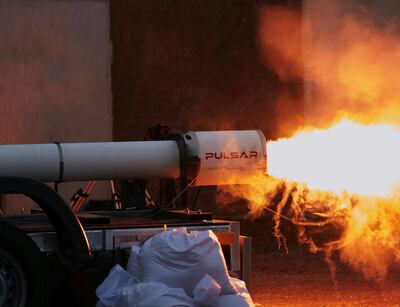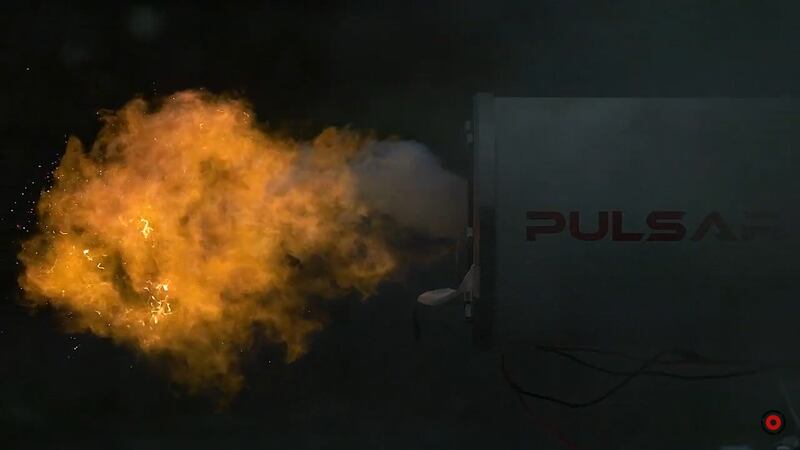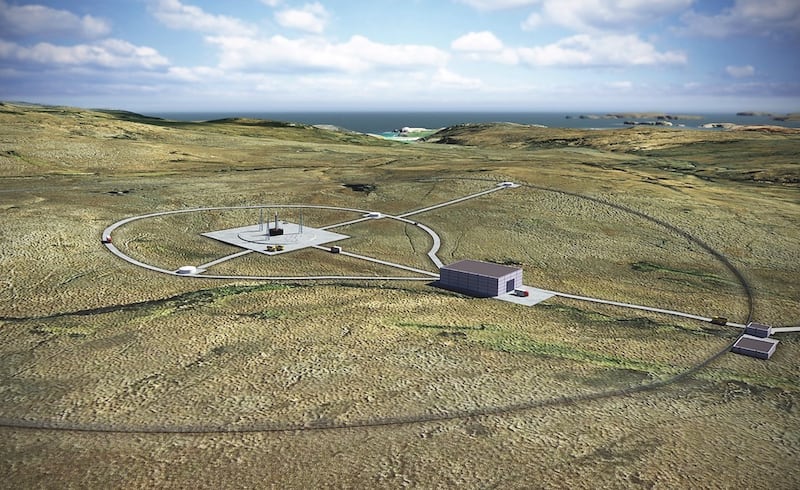A UK company has tested a high-power chemical rocket engine that is capable of launching humans and satellites into space.
Pulsar Fusion, a nuclear fusion company based in Bletchley, south-east England, carried out static tests on the engine, firing it into full thrust to measure performance.
The company’s long-term goal is to produce hyper-speed propulsion engines powered by nuclear fusion technologies for interplanetary travel that could cut the journey to Mars by half.
On Sunday, Pulsar Fusion released video footage of the static test.
“We are delighted with the UK test firings at Cotec [a Ministry of Defence military base in Salisbury, south-west England]. It is a hugely significant moment and we are proud this rocket is built in the UK. To have a British rocket test on UK soil is novel,” said Richard Dinan, chief executive of the company.
“We have a team of fantastic scientists with a wealth of experience to thank for these milestones. We have also drawn talent from some of the UK’s top universities who have begun working with and testing our plasma thrusters at campus facilities.
“We are extremely proud of these achievements and look forward to expanding our network with the British and European space community with our hardware demonstration later this month in Switzerland.”
The test engines produced a thrust of about 10 kilonewtons, but after the success of its static tests, the company will build a 100kN engine.
The company is among a few in the world that aims to produce hyper-speed propulsion engines using nuclear fusion technology.

To achieve propulsion powered by nuclear fusion, the rocket engine would have to create and survive a temperature that exceeds 100,000,000°C.
If successful, the technology would revolutionise space exploration and allow interplanetary missions to be completed far more quickly. The journey to Mars would be halved.
Nuclear fusion-powered engines could travel at more than 80,000 kilometres per hour.
The Space Launch System – Nasa’s nascent rocket to carry astronauts to the Moon – would be able to go as fast as 39,429kph, when it is ready.
Pulsar hopes to develop nuclear fusion propulsion engines for static demonstration by 2025.
By 2027, the company wants to manufacture, launch and test the engine in orbit.











